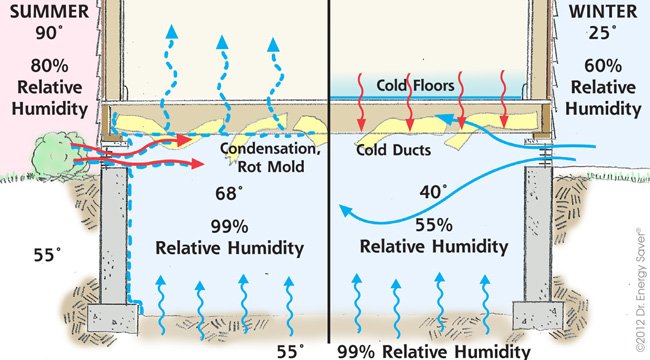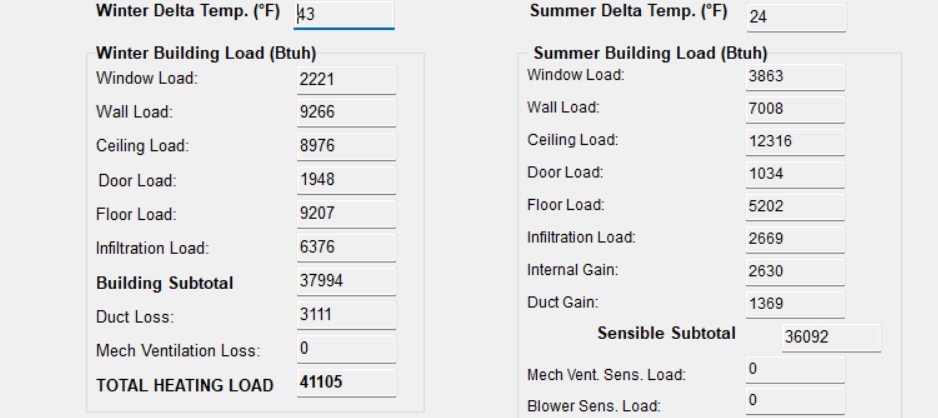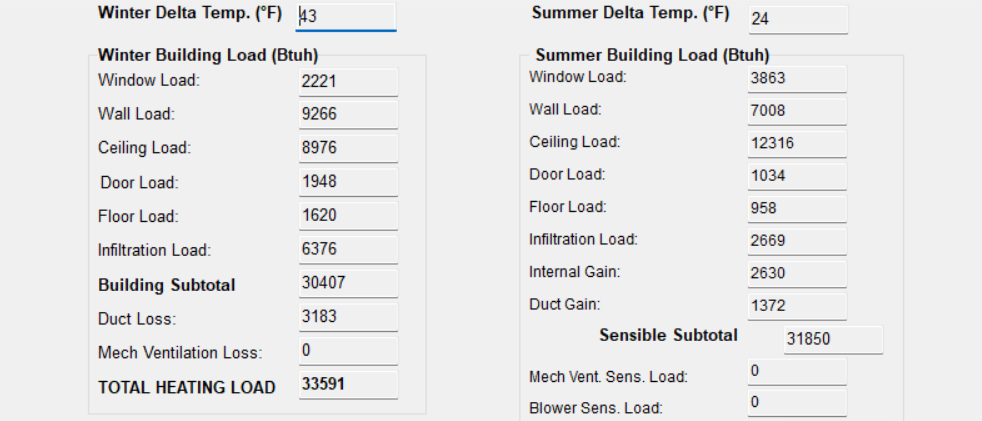Get Tech Tips
Subscribe to free tech tips.
Manual J Field Data: Floors
There are three types of floors: slab-on-grade, crawlspace, and basement. It should be fairly obvious when you are collecting field data as to what type of floor you are working with. Here is a brief overview of how each type affects a load calculation. Much of the information for this article comes from Allison Bailes’s book “A House Needs To Breathe: Or Does It?”

Slab-on-Grade
An uninsulated slab provides free cooling. Slabs can be insulated, and insulating the above-ground portion is the most important. A slab can become wet and absorb water or crack and allow gasses from the ground to come into the house. But load calculation software doesn’t take this into account. The main takeaway here is that a slab provides free cooling in the summer but becomes a part of the heat load in the winter.

Crawlspaces
Basements and crawlspaces act very similarly in terms of how they affect a Manual J load calculation. There are two types of crawlspaces: open and encapsulated. These two types have a dramatically different impact on the heating and cooling load of the house. An open crawlspace lets air and moisture pass freely under the house. This will increase the amount of latent and sensible cooling the house needs. It also can create mold, rot, and a host of other indoor air quality, comfort, and building durability problems. This article from Energy Vanguard highlights how even adding additional venting doesn’t solve any of those problems.

An encapsulated crawlspace offers better performance for the home. Encapsulating a crawlspace involves insulating the perimeter, laying down heavy plastic on the ground, and air sealing. The crawlspace will now remain at a relatively constant temperature and keep moisture out. A dehumidifier keeps relative humidity at a safe level. Encapsulating a crawlspace can be a pricey upgrade for a home, but it may be worth at least bringing up to a homeowner. You don’t want to be on the hook for problems that aren’t yours, and making a homeowner aware of the problems with their home and documenting their choices can keep your company safe in the long term.
Here is some temperature and humidity data from my crawlspace. This graph shows how quickly the space changed once the air sealing was done and the dehumidifier was turned on.

If there is ductwork in the crawlspace or basement, make sure to take credit for this in the load calculation software. Here is an example where I moved the ductwork in the Manual J software from the attic to the crawlspace:
Attic

Crawlspace

Crawlspace with no wall insulation around the crawlspace perimeter (what if we were to add an R10 foam board?)

Keep in mind that, technically, none of this is changing the infiltration within the software. But if you were to add an R10 foam board around the crawlspace perimeter and air-seal it well, your infiltration load would also drop, which you can again take credit for. How much will it change? The only way to really know would be with a blower door test before and after.
The point of all of this is just to point out there are opportunities here. Doing some work within a crawlspace can bring about some significant indoor air quality, home durability, and comfort gains.
Basements (credit to Adam Mufich)

Basements are another important detail to pay attention to while doing a residential design. The two types of basements that can be modeled are conditioned and unconditioned.
The most common basement in the Midwest is a conditioned basement. Like an insulated-encapsulated crawl space, a conditioned basement will have very little (if any) impact on the cooling load of a home. The reason for the low impact is that most basements are below grade. When I refer to “grade,” I am not talking about your high school report card. “Grade” is simply defined as “ground level.” So when I say “below grade,” I am saying that part of the basement is sunken below the ground. Being above or below grade can be a foreign concept to some HVAC professionals due to the fact that basements are regional.
When you are gathering your field data, it is important to measure how much of the basement is below grade. That's because the earth touching the wall does not transfer heat in the same manner as the outside air. Most basements below grade will need almost no cooling in the summertime.
Pay close attention to the type of rooms in a finished basement. It is pretty common to see workout rooms or even a second kitchen. These rooms have internal gains that you must account for in order to keep your customers comfortable.
It is common to see a basement that is a finished space. Wall details are important to pay attention to. Some rooms might be framed and insulated with drywall installed, while other parts of the same basement are unfinished. Unfinished rooms may or may not have framing. In unfinished rooms, the insulation might only be installed on the rim joist and not the entire wall, which will have an impact on the heat loss of the basement. Heat will be transferred from the basement into the foundation.
During the heating season, think of the foundation as a sponge. It will suck the heat out of the space. So if the foundation sucks the heat out of the space in the winter and provides free cooling in the summer, what does this mean? Spoiler alert: basements are generally cooler than the rest of the home and can be tricky to design for. It takes a little creativity and experience to provide comfort year-round in a home with a finished basement. Conditioned basements are much more ideal for installing ductwork than, let’s say, a vented crawlspace or even an attic. That’s because there is little to no heat loss or gain through the surface of the ductwork in conditioned basements.
Wrapping Up
Again, the idea here is to give you a sense of what can make a big impact on the load calculation of a home when it comes to floors. With a slab, things are straightforward. With a basement or crawlspace, be aware of unconditioned, uninsulated, or unsealed areas, as they will create spaces that are hard to keep comfortable. Take credit for reductions in duct loads where you can.











Comments
To leave a comment, you need to log in.
Log In